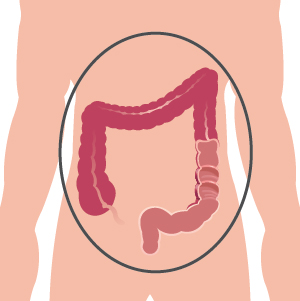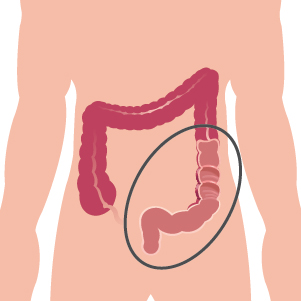What you need to know about colorectal cancer
Colorectal cancer. Those are two words no one wants to hear. According to the American Cancer Society, colorectal cancer is the third most common cancer in the United States with nearly 102,480 new cases of the disease diagnosed in 2013. Fortunately, the death rate from colorectal cancer has been dropping over for more than 20 years due to early screenings and improved treatments.
Undergoing testing to diagnose colorectal cancer may be necessary because of abnormal results from a screening exam or if there are symptoms of the disease, such as a change in bowel habits, abdominal pain, weakness, rectal bleeding or blood in the stool.
Diagnosis may begin with a complete medical history and physical examination. Endoscopic tests to check for colorectal polyps also may be necessary, including a sigmoidoscopy or colonoscopy (procedures used to see inside the colon and rectum), and imaging tests such as a barium enema, double contrast barium enema or virtual colonoscopy. A biopsy is done on any abnormal-looking tissues that are removed during a colonoscopy to confirm the diagnosis of colorectal cancer.
Other imaging tests may be required to determine if a suspicious area is cancerous, learn if the cancer has spread or find out if treatment has been effective. These tests include computed tomography, ultrasound, magnetic resonance imaging, positron emission tomography and angiography.
Once colorectal cancer had been diagnosed, treatment will be determined based on the stage and type of cancer, how far it has spread, overall health, side effects of treatment and long-term prognosis. Surgery usually is recommended for early stage colon cancer. The procedure calls for the removal of part of the colon and nearby lymph nodes. Some stage 0 or early stage 1 tumors can be taken out by removing the base of the polyp or the superficial cancer and a small margin of surrounding tissue.
Colorectal cancer also may be treated with three different types of radiation therapy, which use high-energy rays or particles to destroy cancer cells.
- External-beam radiation therapy focuses radiation on the cancer from outside the body;
- Endocavitary radiation therapy delivers radiation through a hand-held device placed into the anus; and
- Internal radiation therapy (brachytherapy) involves placing small pellets of radioactive material next to or directly into the cancer.
Chemotherapy, which involves administering drugs either into a vein or orally, can be part of a colorectal cancer treatment plan as well. Neoadjuvant chemotherapy may be given along with radiation before surgery to try to shrink some rectal cancers. Adjuvant chemotherapy is given after surgery in case the cancer returns.
It is important to discuss potential side effects of treatment with your doctor. Most side effects should decrease after treatment, but steps can be taken to reduce or relieve them.
For more information about diagnosing and treating colorectal cancer, talk with your doctor or visit the American Cancer Society Web site at www.cancer.org.




